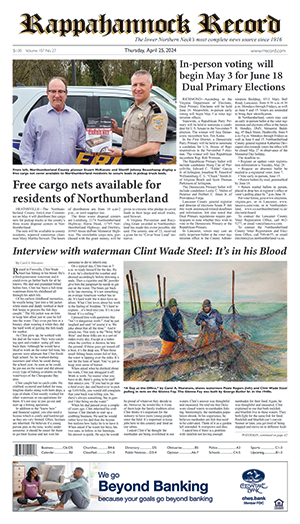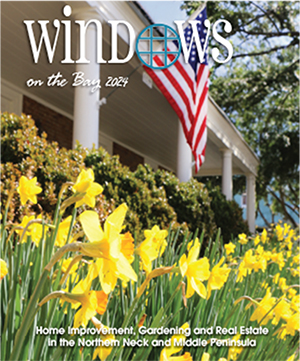One of the most significant figures in the modern history of the Northern Neck was a man who never lived here. His name was Lemuel Edward Mumford. He was born in Berlin, Maryland, in 1850 and in 1875 he relocated to Cape Charles, where he remained for the rest of his life.
Mumford was a natural entrepreneur, one extraordinarily gifted with business acumen. His educational background was limited, but he knew how to make a dollar. Originally, in 1885, he set up a dry goods store in Cape Charles, but he envisioned doing bigger things with his talents, and he sold the store in 1894.
The same year, Mumford was appointed postmaster of Cape Charles by President Grover Cleveland, and the following year he was elected to the town council of the newly incorporated Town of Cape Charles. The first council meeting took place in his living room.
In his search for opportunity, he recognized the need for banks in rural communities, and he set out to meet that demand, in 1894 founding the L.E. Mumford Banking Co. in Cape Charles. His venture met with immediate success, as people trusted him with their wealth. He considered the market on the Eastern Shore to be too limited, and thus expanded his horizons to the Western Shore.
In 1895 he established a branch of his year-old bank in the town of West Point, in King William County, building a stately brick building with an impressive safe, both of which have survived to this day.
From that beachhead in the Middle Peninsula, he discerned the need for rural banking in the Northern Neck and upper Middle Peninsula as well, establishing a branch as far north as Tappahannock in Essex County. In less than 10 years the Mumford banks had cornered the market in the Middle Peninsula and Northern Neck.
Mumford built sturdy and stately bank buildings. Apparently, he thought that a bank’s presence in a community would engender greater business if the patrons thought their money was safeguarded securely, and he seemed to favor updated Romanesque architectural styles. His banks often had crenellated pediments, rounded arches and intricate brickwork. Those that have survived attest that sense of stability.
As he moved rapidly to meet the growing demand from farmers, watermen and mechanics in need of local banks, he sent one of his employees, H. W. B. Williams to advance that process in the Northern Neck. I have written of his accomplishments previously, having founded the Mumford bank branches in Kilmarnock, Irvington, Hague, Callao, Kinsale and Colonial Beach, where he stayed until his death in 1958. At that time, his obituary hailed him as “The Dean of Virginia Bankers.”
As Williams’s deanship was built on the foundation of Mumford’s legacy, he came to be known more widely across the region than his mentor. Of local interest, in 1914, the Supreme Court of Virginia ruled against Mumford in a civil suit brought by the L. E. Mumford Banking Co. against the Farmers and Merchants’ Bank of Kilmarnock Inc.
Mumford’s business career is reminiscent of Napoleon Bonaparte’s comment when asked what was his favorite battle, to which he replied, “The next one.” Mumford went from merchandizing to banking, to politics, to the post office, and to property acquisitions. By 1915, he was out of the banking business, and his banks assumed new names not associated with him. He died in 1935 at the age of 75.
The erasure of his name, through mergers and buy-outs, from the banks he had founded, should not diminish his pivotal role in the evolution of financial history across the communities of the Northern Neck and Middle Peninsula.











